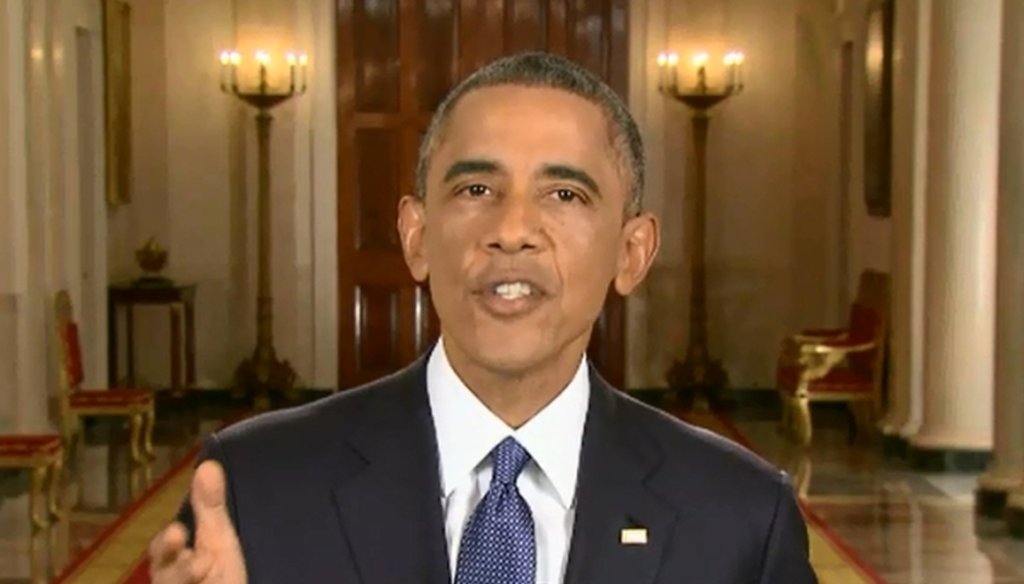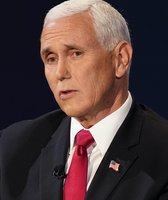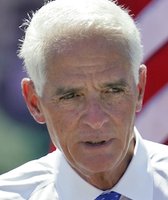Get PolitiFact in your inbox.

President Barack Obama announces his new policy on deportation of undocumented immigrants in a prime-time address from the White House on Nov. 20, 2014.
Updated Friday, November 21st, 2014 at 12:47 p.m.
President Barack Obama spoke to the nation about immigration on Thursday night, unveiling a plan to prevent deportations for broad swathes of people living in the United States illegally.
The broad outline of the plan suggests it could shield roughly 4 million to 5 million people from the threat of deportation. If 11 million illegal immigrants are in the United States, as several estimates suggest, that would mean temporary legal status for roughly 35 to 45 percent.
Given the new policy, we thought it would be a good time to review some key fact-checks on immigration. We’ve selected 12 reports that shed light on Obama’s speech and the topic of immigration. (Browse all of our fact-checks on immigration.)
Obama’s powers
Obama intends to use his executive powers to prevent deportations, something he did in 2012 for young people (often called "dreamers") through a program called Deferred Action for Childhood Arrivals, or DACA. The 2012 action allows undocumented immigrants who came to the country as children to apply for a renewable, temporary status that suspends deportation and allows them to work in the country.
That led some to charge that Obama should use his executive power to stop deportation for all undocumented people.
A year ago, a heckler interrupted Obama’s speech to say, "You have a power to stop deportation for all undocumented immigrants in this country." We rated that Mostly False.
Experts say it would be difficult, if not impossible, for Obama to offer legal status to every undocumented person. The best he could do would be to expand it to a broader group than he already has. If media reports are accurate, Obama’s plan will be exactly that -- an expansion for some, but not all.
In a similar vein, U.S. Sen. Marco Rubio, R-Fla., urged his fellow conservatives to get behind legislation on immigration, saying it would prevent Obama’s legalizing the entire population of immigrants here illegally.
"I’ve been saying now I believe that this president will be tempted, if nothing happens in Congress, he will be tempted to issue an executive order like he did for the DREAM Act kids a year ago, where he basically legalizes 11 million people by the sign of a pen," Rubio said in a radio interview last year. PolitiFact Florida rated that Mostly False as well, for the same reasons.
Bipartisan legislation
Rubio and seven other senators unveiled bipartisan legislation that passed the Senate in April 2013. It was lengthy and had many goals: beefed up border security, more work-related immigration, and legal status for people already here. The bill passed the Senate, but the House Republican leadership wouldn’t bring it to the floor for a vote.
It quickly became an issue in the 2014 campaigns, especially in Republican primaries. For example, House Majority Leader Eric Cantor released a flier criticizing the legislation as he fought a primary challenge that he ended up losing. The flier claimed the Senate bill was an "Obama-Reid plan to give illegal immigrants amnesty." We rated that Mostly False. For starters, the plan was put together by the bipartisan group of senators (who became known as the Gang of Eight), not Obama or Senate Majority leader Harry Reid.
Whether the bill constituted amnesty or not is more difficult issue. Rubio said it was not; we rated that Half True. The legislation included many requirements that immigrants would have to meet if they wanted legal status. They wouldn’t have to go back to their home countries, but they would have to deal with fines, background checks and waiting periods, and the law was notably tougher than a similar one signed in 1986 by Ronald Reagan.
Other critics noted accurately that the bill was full of special provisions for business. Karen Handel, who lost a GOP primary for U.S. Senate in Georgia, said that the bill was "filled with things like rewards for au pair agencies, Alaskan seafood processors and Vegas casinos." PolitiFact Georgia rated her statement True.
Behind all the legislative wrangling, though, were electoral politics. Bill Richardson, the former Democratic governor of New Mexico, noted that Hispanic voters -- a key constituency in many swing states -- overwhelmingly favored immigration legislation. "Almost every Hispanic in the country wants to see immigration reform," he said. We checked the poll numbers and rated his Mostly True.
Who’s coming here
We’ve also fact-checked interesting claims describing the current state of immigration in the United States.
Julian Castro, now the U.S. Secretary of Housing and Urban Development, noted that up "to 45 percent" of illegal immigrants "are not people that physically crossed the southern border or northern border. They are visa overstayers." The best estimates show that Castro was in the ballpark there (it could be as little as 38 percent), so we rated his statement Mostly True.
Rubio said the United States needs to encourage more work-related immigration, noting that the country has "an immigration system where only 6.5 percent of people who come here, come here based on labor and skill." That’s also largely accurate; though you can find numbers that show a slightly higher result. Still, we rated his statement Mostly True.
The United States also deploys many resources to securing the border. U.S. Rep. Debbie Wasserman Schultz, D-Fla., said that "President Obama has the most border patrols and border security deployed at the border of any previous president." We rated this Mostly True, with the caveat that the dramatic build up in border security started under President George W. Bush.
Even with all this security, though, there are parts of the border that are still relatively open. In 2013, U.S. Rep. Lamar Smith, R-Texas, said, "In 2010, the nonpartisan Government Accountability Office found that only 6.5 percent of the U.S.-Mexico border was under full control of the Border Patrol."
He’s mostly right: the report showed 6.5 percent of border miles had agents and equipment constantly present, a level of enforcement usually reserved for high-traffic urban areas. Another 44 percent of miles are under what’s considered "acceptable" levels of security. We rated Smith’s statement Mostly True.
Ridiculous claims
We’ll end with a couple of ridiculous claims.
David Dewhurst, the lieutenant governor of Texas, said that authorities have found "prayer rugs" on the Texas side of the border with Mexico, suggesting members of the Islamic State have entered the country.
PolitiFact Texas found no evidence to suggest prayer rugs have been found, and lots of skepticism from authorities. We rated his claim Pants on Fire!
U.S. Rep. Duncan Hunter, R-Calif., went so far as to claim that Islamic State fighters have been apprehended at the U.S.-Mexico border. "At least 10 ISIS fighters have been caught coming across the Mexican border in Texas," he said on Fox News, and there are "dozens more that did not get caught by the Border Patrol."
This claim also had no evidence to back it up. It seemed to come from anonymous sources mentioned on partisan websites. Authorities said this didn’t happen. We rated Hunter’s claim Pants on Fire.
Our Sources
See fact-checks for sources.























































